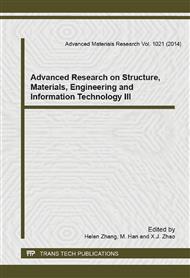p.209
p.214
p.218
p.225
p.229
p.233
p.240
p.247
p.251
Analysis of Environmental Tobacco Smoke in China
Abstract:
Environmental tobacco smoke (ETS), also known as second-hand smoke (SHS), is a complex mixture of chemicals generated during the burning and smoking of tobacco products. Smoking has become the most important indoor air pollutant source in China in terms of human health. The paper firstly analyzed the health effects of environmental tobacco smoke, the conditions of the environmental tobacco smoke exposure in recent years, and environmental impact of environmental tobacco smoke. The exposure to ETS that has influence on human heath, specially the women and children is the important risk factor. Meantime, the ETS exposure rate in the crowd has risen in recent years, and the public places, workplaces and families that pose the ETS exposure are the main sites. Second-hand smoke severely impact on the indoor air quality, especially it is the most important pollutant source of indoor air PM2.5. The exposure to Environmental Tobacco Smoke (ETS) does severe harm not only to the people’s lives and health, but also to social economic development in China. Finally, the paper put up with some suggestions to control environmental tobacco smoke in China.
Info:
Periodical:
Pages:
229-232
Citation:
Online since:
August 2014
Authors:
Keywords:
Price:
Сopyright:
© 2014 Trans Tech Publications Ltd. All Rights Reserved
Share:
Citation:


